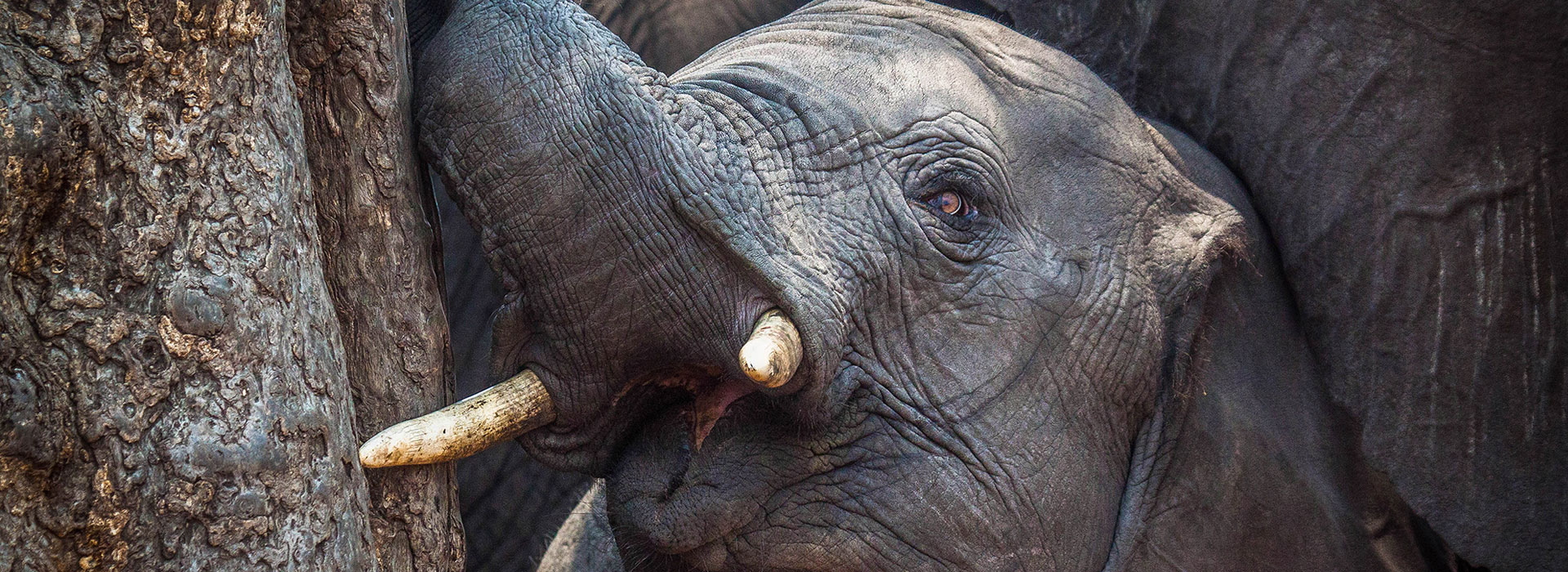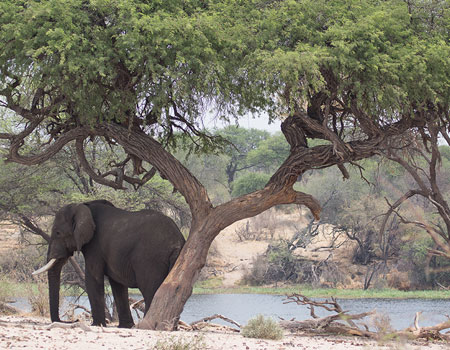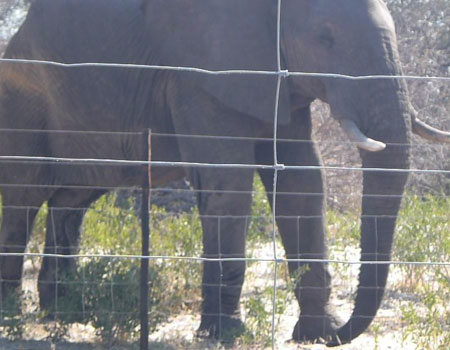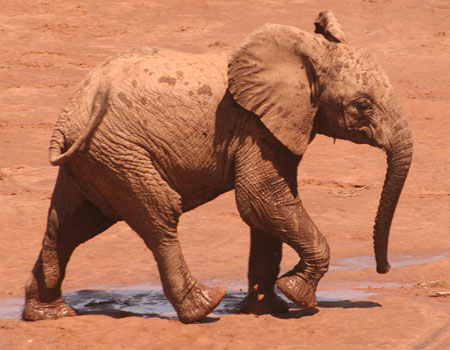COEXISTENCE
A key pillar of our work is partnering with rural communities to work towards human-elephant coexistence. 80% of the remaining elephant population require land outside of protected areas, bringing them into contact and competition with humans. Increasing mitigation practices and sustainability of rural communities will lead towards decreasing the negative impact elephants can have on rural livelihoods, increasing tolerance for wildlife.
Elephants are ecosystem shapers. By knocking down trees and opening up bushy areas they can increase the amount of grass available to other herbivores in the system, including livestock in shared ecosystems. They move across vast distances, using distinct pathways that also offer easy travel routes to other species, including humans. Elephants can also act as seed dispersers, facilitating the growth of many woody species by depositing seeds in their faeces, woody species utilised for building material and firewood, as they move around the region. They are also hugely iconic and are used across the world as symbols of wilderness, strength, wisdom, and nature. Given all of these factors, conserving elephants and the resources that they require is beneficial to entire ecosystems, as well as to the humans that rely on them.
Their requirement for large areas is increasingly bringing elephants into competition with humans, particularly rural communities living on the boundaries of protected areas. Many of these communities rely on subsistence farming for their livelihood and thus suffer a great deal from the effects of elephants crop-raiding. Therefore, understanding the needs and concerns of these communities, empowering them with mitigation knowledge alongside understanding elephants goes a long way to decreasing the social and economic costs of living alongside wildlife and beginning the journey towards coexistence.
As part of our Community Coexistence pillar, we partner with farmers, holding 'Farmer' workshops teaching subsistence farmers how to deter elephants and working with them to trail new initiatives, provide vital materials to enable farmers to implement these measures and to increase the use of conservation agricultural methods to improve overall yield.
Our ‘Living with’ workshops give communities’ access to information about elephants that impact their everyday life. Answering questions such as it ‘when is it safest to fetch water from the river?’, ‘how do I know if can elephant is angry’ and ‘what should I do if I come across an elephant when walking?’ .
Living next to a National Park, the Makgadikgadi Pans National Park, our partner communities have the opportunities to benefit directly from tourism. Increasing yield, decreasing crop loss and increasing farming efficiency will give farmers and other community members the time to create initiatives to make and sell local produce to tourists. Our 'Community Training' workshops focusing on entrepreneurship and skills training encourage such creativity.
Their requirement for large areas is increasingly bringing elephants into competition with humans, particularly rural communities living on the boundaries of protected areas. Many of these communities rely on subsistence farming for their livelihood and thus suffer a great deal from the effects of elephants crop-raiding. Therefore, understanding the needs and concerns of these communities, empowering them with mitigation knowledge alongside understanding elephants goes a long way to decreasing the social and economic costs of living alongside wildlife and beginning the journey towards coexistence.
As part of our Community Coexistence pillar, we partner with farmers, holding 'Farmer' workshops teaching subsistence farmers how to deter elephants and working with them to trail new initiatives, provide vital materials to enable farmers to implement these measures and to increase the use of conservation agricultural methods to improve overall yield.
Our ‘Living with’ workshops give communities’ access to information about elephants that impact their everyday life. Answering questions such as it ‘when is it safest to fetch water from the river?’, ‘how do I know if can elephant is angry’ and ‘what should I do if I come across an elephant when walking?’ .
Living next to a National Park, the Makgadikgadi Pans National Park, our partner communities have the opportunities to benefit directly from tourism. Increasing yield, decreasing crop loss and increasing farming efficiency will give farmers and other community members the time to create initiatives to make and sell local produce to tourists. Our 'Community Training' workshops focusing on entrepreneurship and skills training encourage such creativity.





